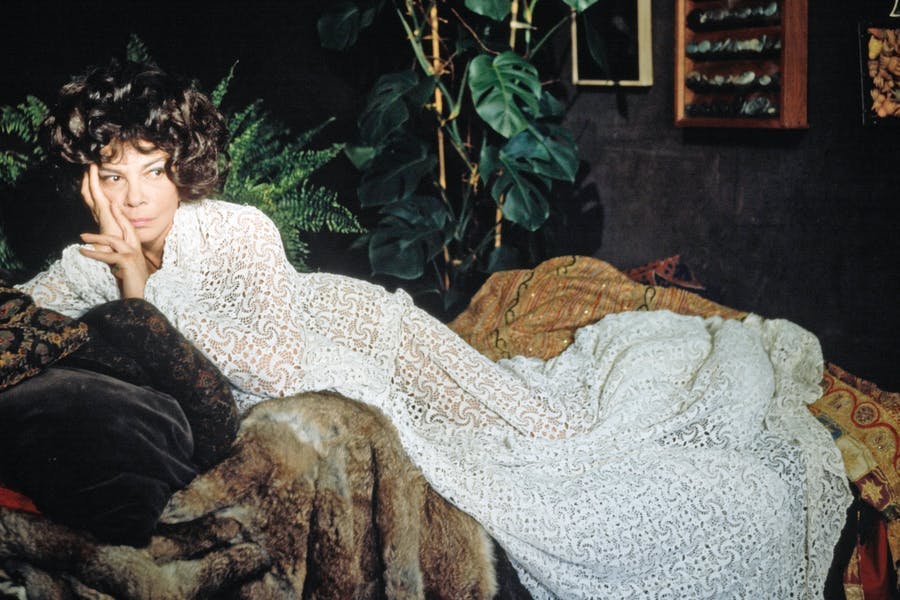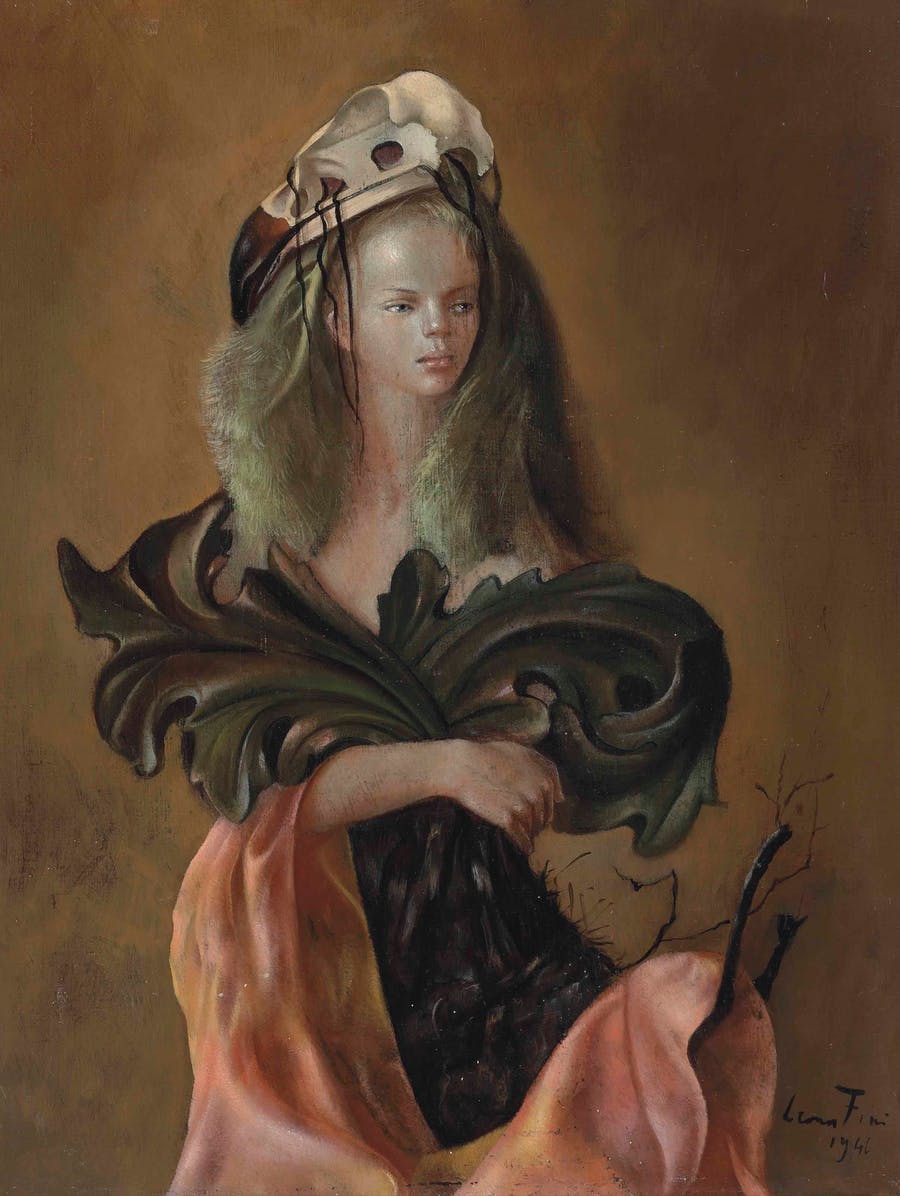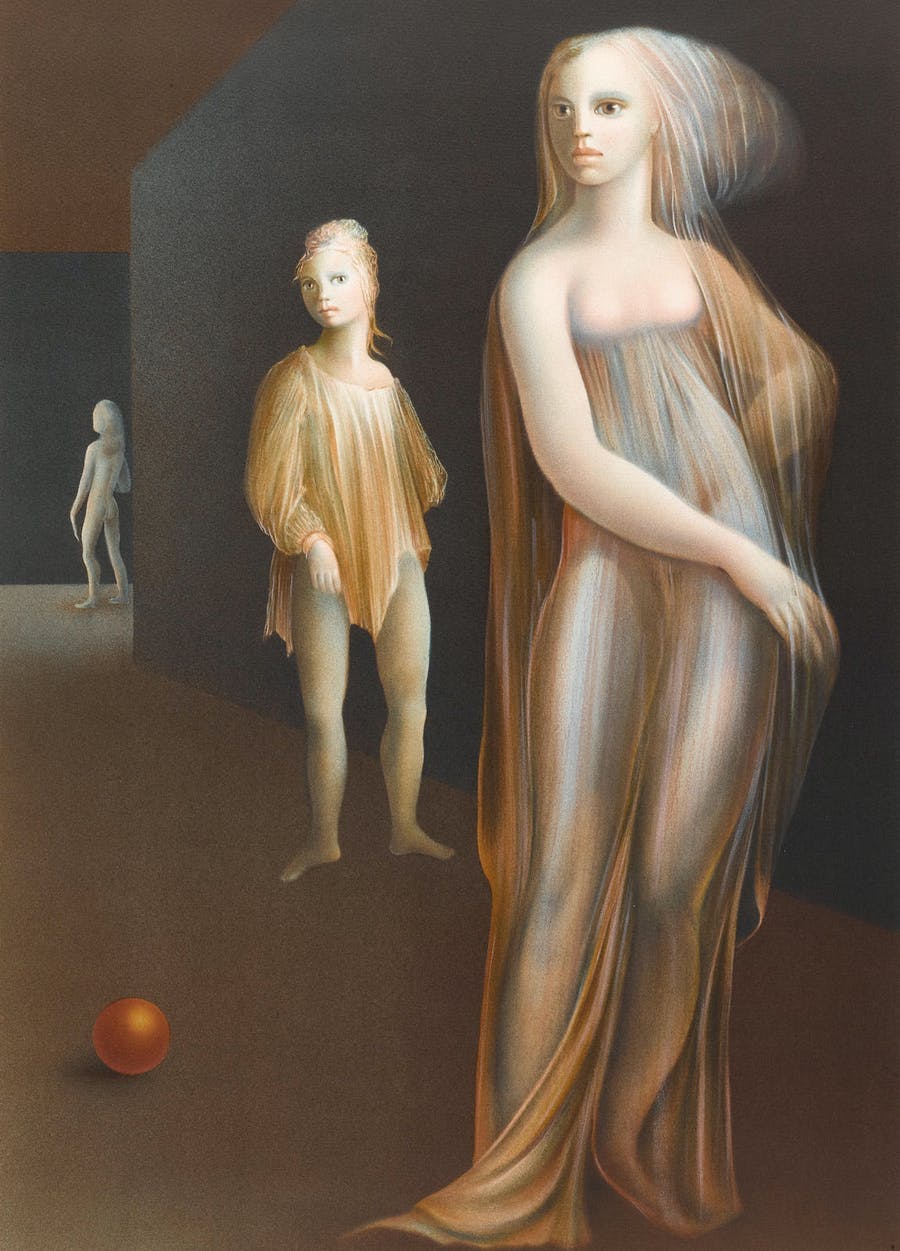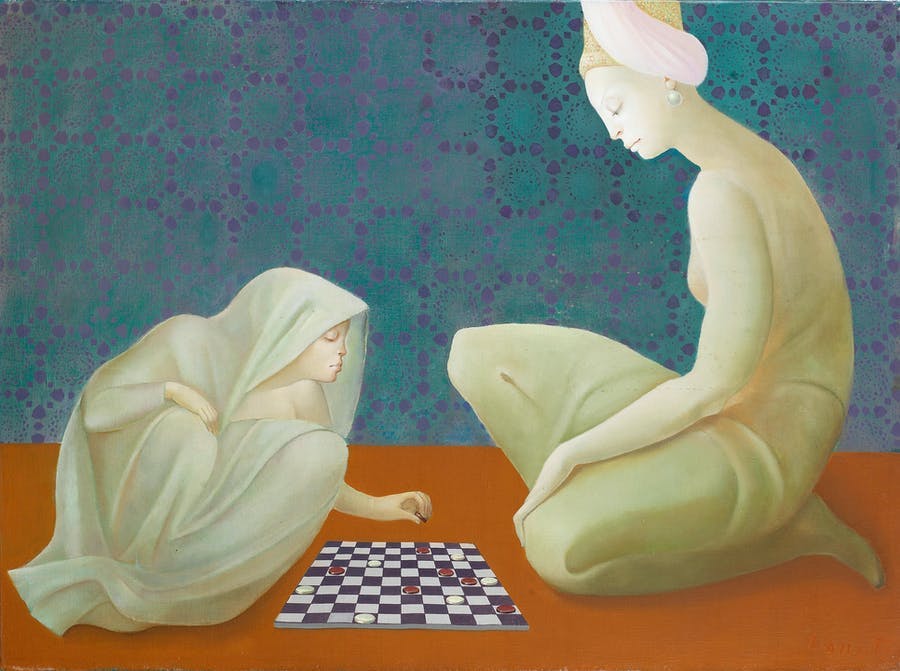Leonor Fini: 6 Little Known Facts
A multidisciplinary artist tied to the surrealist movement, Leonor Fini has been described as a sorceress, a mystical creature and a cat woman, but she was above all an empowered artist who broke the codes of femininity.
Leonor Fini is probably one of the most complex and bewitching artists of the 20th century. Without ever dissociating her life from her art, she crossed time and place with remarkable artistic autonomy, transposing her avant-garde ideals onto the canvas with force and determination. Here are 6 little known facts about her journey.

1. Her mother disguised her as a little boy
Leonor Fini was born in 1907 in Buenos Aires to an Italian mother and a tyrannical Argentinian businessman. Her parents' marriage ended bitterly when she was less than a year old, forcing her mother to take a boat to Italy to escape her husband. Her childhood was punctuated by her father's regular attempts to bring her back to Argentina, sending one private detective after another to track her and her mother across Europe. Madame Fini used to dress Leonor as a little boy every time they left the house, a ploy that proved useful since her father never managed to find them.
2. Fini was a regular at the morgue
From the age of 13, Fini regularly visited the local morgue to study the human body. This experience strongly influenced her perception of the human figure, which she later captured in a very personal style, through ethereal humanoid creatures that are today immediately recognizable.
See also: 5 Feminist Masterpieces

3. A Surrealist, but not really
Although her work is akin to Surrealism, Fini always refused to formally join the movement. Arriving in Paris at the age of 24, she gravitated around Surrealist circles, was inspired by their work, and counted artists as legendary as Salvador Dalí and Dora Maar among her close friends. However, she affirmed her disdain for the group's leader, André Breton, for his misogynistic attitudes. Fini’s refusal to formally attach herself to a trend reflects her desire for independence and artistic autonomy.
See also: René Magritte: Bowler Hats with Belgitude

4. Woman was at the centre of her art
Through her art, Fini tried to shake up, even reverse, the perceptions linked to gender and sexuality. In an attempt to subvert the roles imposed by society, she abandoned representations of fragile, innocent or fatal women in favor of goddesses inspired by Greek mythology. She applied herself to painting female figures who could not be categorized, judged or morally or sexually defined. Her painting has been described both as a challenge to Breton's ideals and an echo of her obligation to disguise herself during her childhood.
5. Her beauty was spellbinding
The most famous photographers of the time, like Henri Cartier-Bresson or Brassaï, did not hide their desire to immortalize Fini. A woman of great beauty, in the words of her biographer Peter Webb, the artist willingly posed, sometimes provocatively, sometimes erotically, and took on the role of a sexually confident woman. Faithful to her art on canvas as in life, you could often see her in elaborate costumes, adorned with feathers, jewelry or furs, taking the appearance of a creature from another world.
See also: Tamara de Lempicka and the Roaring Twenties

6. Her talent transcended disciplines
Though mainly known for her painting and engravings, Fini was also a talented designer and costume designer, and even designed the bottle of the ‘Shocking’ perfume by Schiaparelli. She designed the costumes for several theatrical and operatic productions, going as far as conceptualizing her own ballet, Le Rêve de Leonor, which was later choreographed by Frederick Asthon. At the end of her life, she devoted herself to writing and illustrated the novels of many writers.
See also: The 15 Most Expensive Female Artists

Fini stayed in France until the end of her life, in the company of her lovers Konstanty Aleksander Jeleński and Stanislao Lèpri, but also, and above all, with her adored cats. Married for a brief time to Federico Veneziani, Fini also openly presented herself as bisexual while the idea was still taboo and she never remarried. She died in Paris in 1996.


